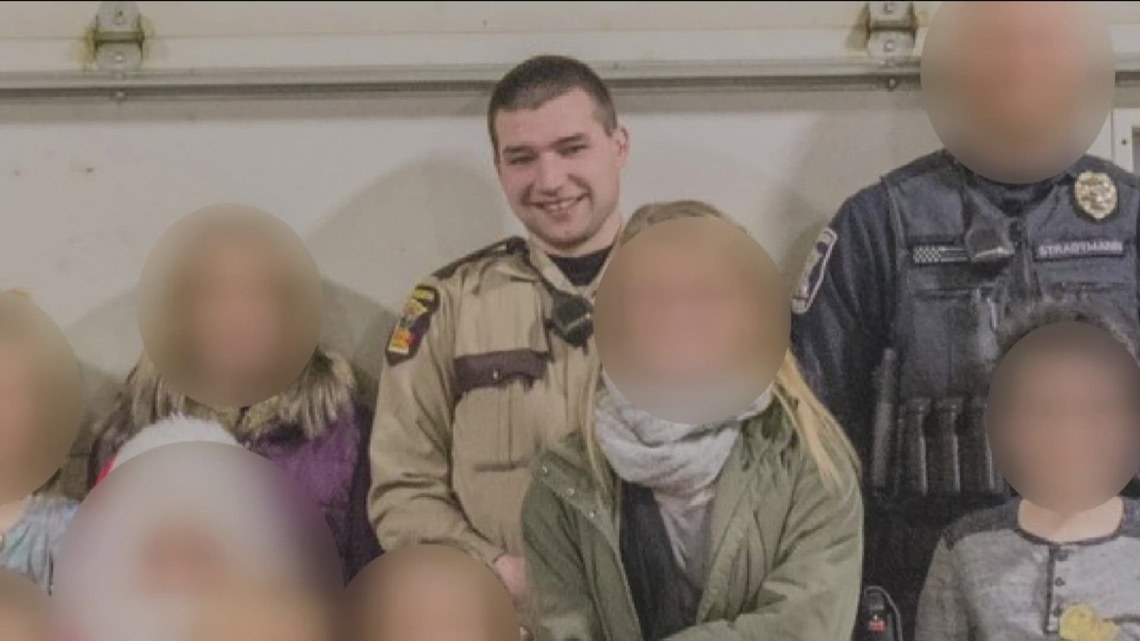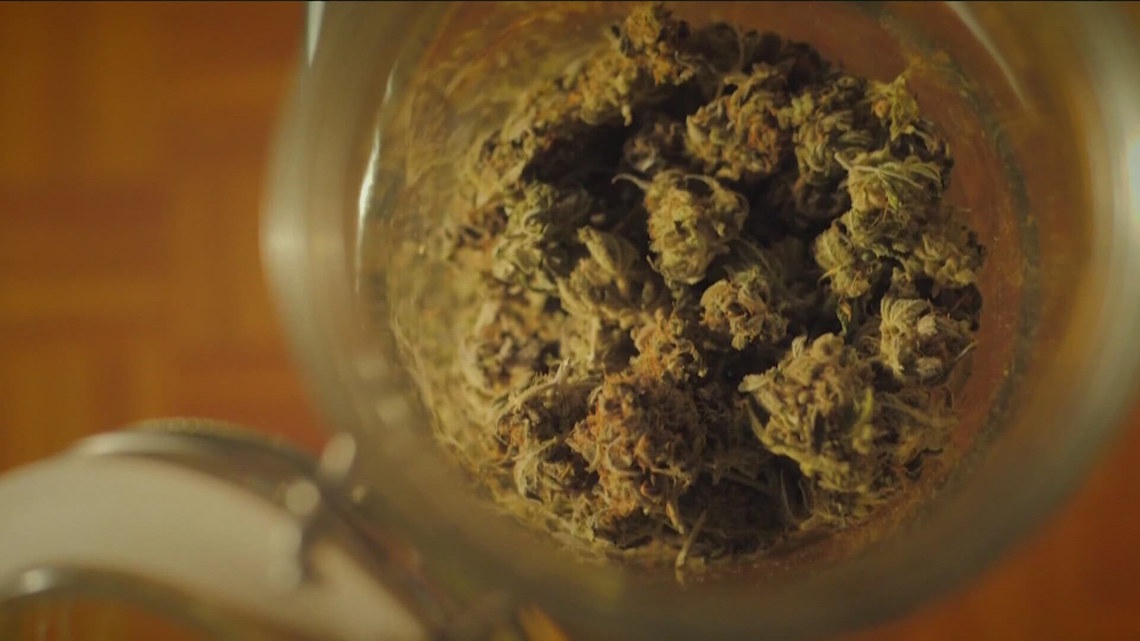Kare11
Washington County purchases historic bridge for $1


Assembly and delivery fees were definitely NOT included.
WASHINGTON COUNTY, Minn. — Somewhere in the middle of Washington County there now sits a bridge to nowhere that came at an unbeatable price.
“When you can only pay a dollar for a bridge it’s a pretty good day,” said Ryan Hoefs, an engineer for Washington County Public Works.
Though Hoefs admits it’s a day that took a couple years to get here.
Back in 2021, Brown County engineer, Wayne Stevens, told KARE 11 that they were looking to unload the century old piece of state history that connected Brown County and Renville County because it could no longer handle the loads it needed to.
“It can’t take big equipment, big tractors, big combines across here,” Stevens said. “For the betterment of the traveling public, we want to get rid of it, and keep it someplace else.”
And about that tiny price tag, keep in mind, it didn’t include delivery fees.
“The total move was about $90,000 to get it up here,” Hoefs said. “It was a lot of coordination. The contractors had to basically get it out of the ditch where it was resting.”
The bridge began it’s commute on Thursday morning, but had to make a pit stop in Lakeville until after midnight Friday, before it was authorized to jump onto the highway and hit the home stretch.
Ryan Hoefs: “They got to Hastings at about 2am, and then we made it up to here at about 3:30 in the morning.”
Kent Erdahl: “I’m am no expert but I am going to guess that this (gravel pit) is not the final destination for the bridge.”
Hoefs: “That is correct. We needed a place to store it that was kind of out of the way so we could get our work done.”
Though a few beams, rivets and gussets do need to be replaced, he says the bridge is in great shape, especially considering the lighter workload that awaits.
“It will be used by bikers, walkers, could be cross country skiers,” Hoefs said.
It will evenutally Join a growing number of historic bridges that now connect the county’s parks and trails.
“It’s a big bridge,” Hoefs said. “Ultimately, we might look at narrowing it, potentially, so it’s quite fitting for a park trail, but a lot of that will be decided once we know more about where we’re going to put it.”
Locations within Lake Elmo Park and at St .Croix Bluffs have received early consideration for the bridge, but he says the site selection process will likely take a few years and he says foundation construction could add at least another $100,000 to the final price tag.
Erdahl: “So why is this worth it?”
Hoefs: “Washington County puts a lot of value into active transportation and this is a perfect way to A. preserve history and B. provide those connections over what could be ravines, waterways in a fashion that’s not done every day.”
Erdahl: “I heard a rumor that it might not have actually been paid for yet.”
Hoefs: “Yes, there might be a rumor floating around.”
Erdahl: “Is there going to be an official handoff for that one dollar?”
Hoefs: “Yeah, I think we are looking to coordinate an official handoff to make this an official purchase.”
Watch the latest reports from the KARE 11 sports team in our YouTube playlist:
Kare11
Former MN State Trooper Shane Roper, charged with manslaughter, requests case dismissal


The former state trooper is charged with the killing of 18-year-old Olivia Flores.
ROCHESTER, Minn. — Editor’s Note: The above video first aired on 8/26/2024.
The former Minnesota State Patrol trooper charged with the killing of an 18-year-old girl is asking for his case to be dismissed and a change of venue for it to be moved out of Olmstead County.
The former trooper, Shane Roper, and his attorney argue that the “extensive and regional media coverage” jury pools are likely tainted and a fair trial could not be conducted in Olmstead County.
According to a criminal complaint, Roper was driving 83 miles an hour, full throttle with his lights and siren off when he sped through the busy Rochester intersection by the mall and slammed into 18-year-old Olivia Flores.
Records show he’d been suspended twice and reprimanded twice more for similar behavior.
The order from Roper’s attorney also asks the court to preclude the introduction of any evidence related to prior speeding or traffic incidents involving Roper.
Roper and his attorney are asking for charges 1-8 to be dismissed for “lack of probable cause.”
Kare11
‘This doesn’t change anything’ Biden apology for Native American boarding schools draws mixed reaction


For the very first time, a sitting President has apologized for boarding schools that tore Native Americans apart and led to countless cases of abuse and death.
MINNEAPOLIS — During his first presidential visit to Indian Country on Friday, Joe Biden delivered a historic and emphatic apology, acknowledging 150 years of abuse, trauma and death inflicted by Native American boarding schools.
“I formally apologize, as President of the United States of America, for what we did,” Biden said. “It’s one of the most horrific chapters in American history,” said President Biden.
Christine Diindiisi McCleave, former CEO of the National Native American Boarding School Healing Coalition, spent years documenting the stories of boarding school survivors and advocating for justice and accountability by the US leaders.
“My family has two generations of boarding school history that I know of,” McCleave said, during an interview for the KARE 11 Series “Lost History,” which detailed the impact of boarding schools in Minnesota.
During his speech on Friday, President Biden acknowledged the work of the Native American Boarding School Healing Coalition and efforts to better understand the horrors and generational trauma the schools inflicted.
“Generations of Native children stolen, taken away to places they didn’t know,” Biden said. “Children abused emotionally, physically and sexually abused, forced into hard labor, some put up for adoption without the consent of their birth parents. Some left for dead in unmarked graves.”
Christine Diindiisi McCleave: “I struggle with what I’m supposed to say and what I really feel.”
Kent Erdahl: “Why do you say that?”
McCleave: “Well, because today is historic and while I am grateful to see this progress being made. I am also realizing just how short it falls… from real reparations, from real healing.”
She knows she’s not the only one who feels that way. The National Native American Boarding School Healing Coalition surveyed survivors in 2016.
“The thing they wanted the least was an apology because, while it is an acknowledgement, it doesn’t change anything,” McCleave said. “The majority of them said they wanted a truth commission. Trying to find out exactly how many boarding schools existed, how many children went to those boarding schools and how many children died at those schools.”
She says an investigation led by Interior Secretary Deb Haaland, whose grandparents and mother were among those sent to these schools did help better understand that impact, but it only scratched the surface.
“They were only able to investigate the Federal Government’s records,” McCleave said. “Half of these schools were run by churches, of various denominations, and so a truth commission would be able to look into those records as well.”
“Nearly one thousand documented Native child deaths, though the real number is likely to be much, much higher,” Biden said on Friday.
Bills in both the House and the Senate could make that commission a reality, but until that happens, Christine says she can’t ignore the politics of an apology that took place in a swing state, just days before an election.
McCleave: “This apology doesn’t change anything for my mother, who was abused as a child. Of for my grandfather who was a abused at a Catholic Indian Boarding School.”
Erdahl: “Do you hope that this isn’t just an election ploy?”
McCleave: “I hope that this apology actually helps that bill get passed. Native American people are no stranger to being political pawns, so you know what, if this is an election ploy so be it, I hope something good comes out of it.”
Kare11
Hazelden addiction, recovery experts host first cannabis summit


Researchers spoke about increased THC potency and the impact on youth brain development.
ST PAUL, Minn. — Whether purchased from dealer or dispensary, weed has become more potent over the years. In 2022, the federal government reported THC levels more than tripled since 1995.
Hazelden Betty Ford Foundation Graduate School addressed this Friday at its first cannabis summit. Attendees primarily included the nonprofit’s graduate students as well as undergraduate students from nearby universities.
Speakers included researchers from the University of Minnesota, Hamline University, Mitchell Hamline School of Law and others.
Ken C. Winters, is a senior scientist at the Oregon Research Institute’s Minnesota location and a consultant for the University of Iowa’s Native Center for Behavioral Health.
He covered the interplay between youth, cannabis and health.
“It’s not your grandparents’ marijuana these days,” Winters said to the students.
The Hazelden Betty Ford Foundation Graduate school offers a 2-year program, in which students like John Ryan and William Barksdale are earning counseling degrees in substance use and mental health.
“The takeaway would be that you’ve seen potency levels increase quite a bit, and the research is trying to keep pace with that,” Barksdale said.
“As we saw today, marijuana use has gone up in the last couple years such that it’s eclipsed alcohol use in terms of daily users in the United States,” Ryan added. “It’s is much more concerning now because there is such a higher degree of potency that’s available on a wider basis.”
Ryan says it’s especially concerning for youth.
“The subject of the last presentation, which I found quite engaging, was the specific effects on adolescents,” he said. “So, teenagers and people within that young adult range, the 18 to 25-year-olds because that’s generally the period the most brain development takes place. So that’s the area of concern … but it’s still something that I think is being studied and being observed in the first stages of that.”
Kevin Doyle provided opening remarks. He has more than 35 years of experience as a licensed professional counselor. Today, he’s president and CEO of the grad school.
“Potency, dosage, frequency of use, availability, legal cutoffs in terms of age, all those things need to be talked about,” Doyle said. “Adolescent brain development. We know more and more about that every year. Sometimes it seems like every day we learn more about that.”
“How do we as a treatment community need to be prepared to respond?”
The summit comes as Minnesota works to set rules for the cannabis industry after legalizing the drug for recreational use last year. A public comment period is expected later this fall.





GIPHY App Key not set. Please check settings